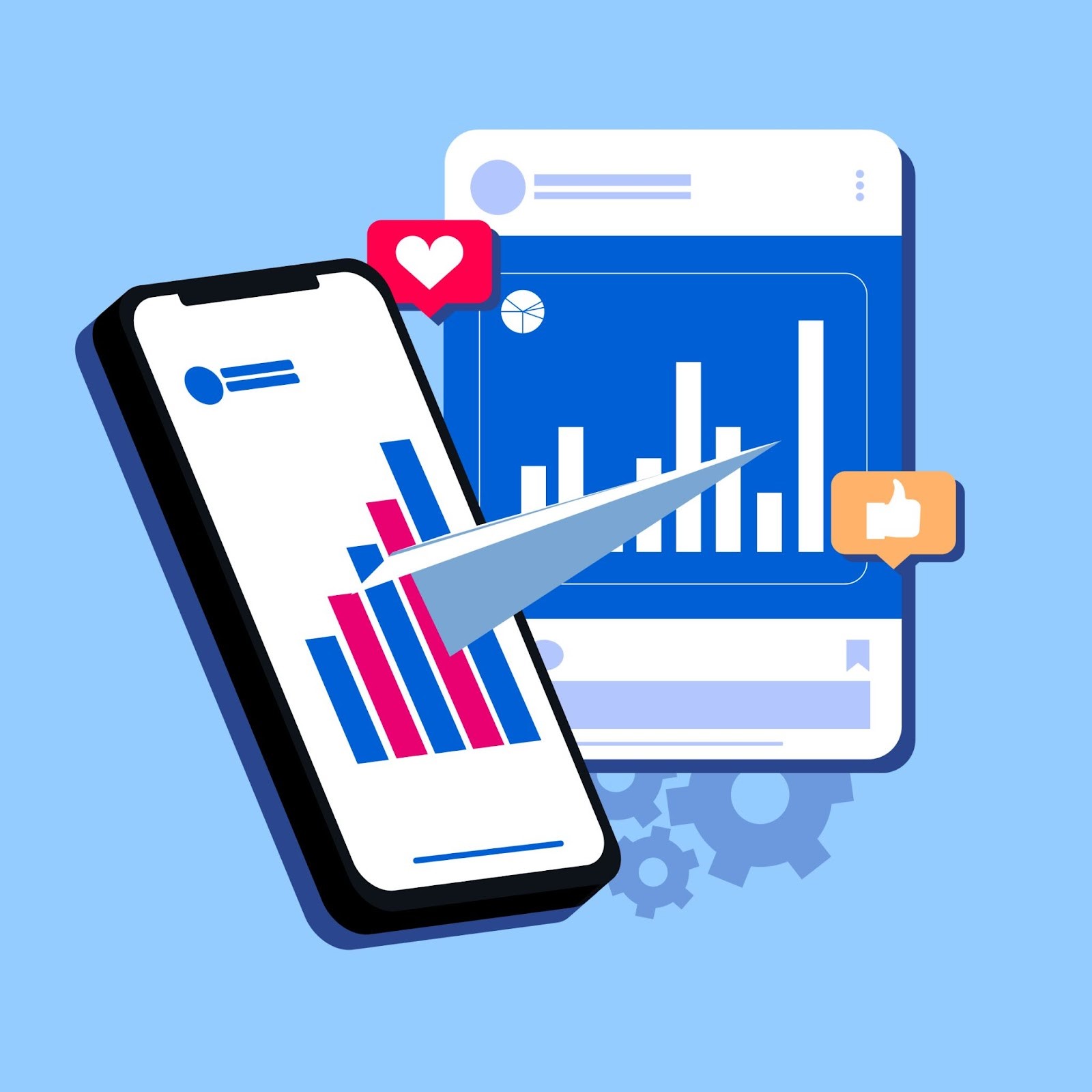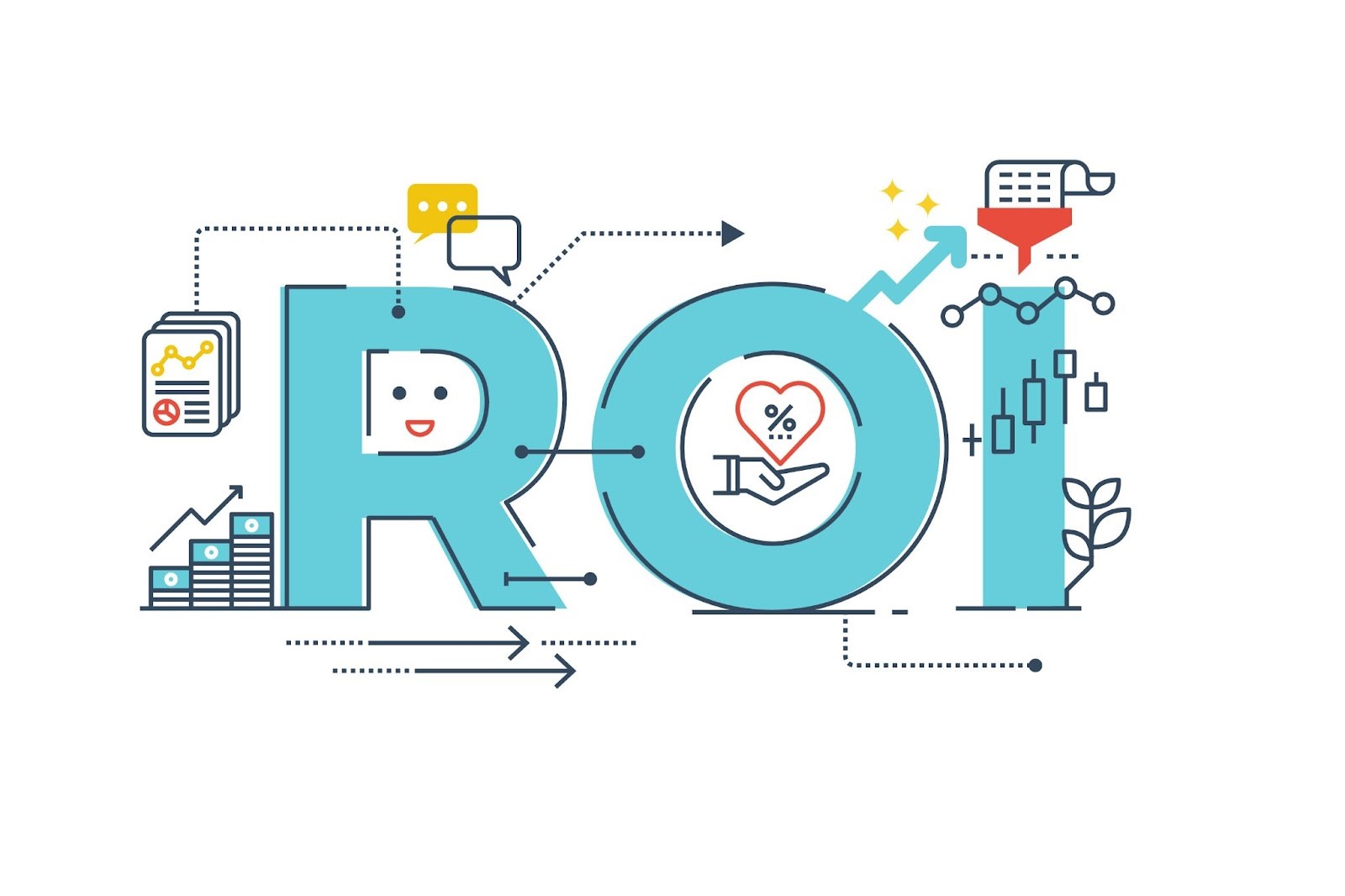Social media has become an integral part of our lives in today’s digital age. It’s not just a platform for sharing photos or connecting with friends anymore; it has also evolved into a powerful tool for businesses to reach their target audience and promote their products or services. But with great power comes great responsibility, especially when it comes to measuring the effectiveness of your social media efforts.
In this article, we’ll dive into the world of ROI with social media analytics and explore how businesses can measure their Return on Investment (ROI) by conversion tracking in social media.
 Social media analytics has many advantages. It empowers businesses with the insights and data needed to make informed decisions, optimize their marketing efforts, engage with customers effectively, and drive growth and profitability in an increasingly digital and interconnected world. Here’s why businesses should pay close attention to social media analytics:
Social media analytics has many advantages. It empowers businesses with the insights and data needed to make informed decisions, optimize their marketing efforts, engage with customers effectively, and drive growth and profitability in an increasingly digital and interconnected world. Here’s why businesses should pay close attention to social media analytics:
 To measure ROI on social media accurately, businesses need to track two essential metrics: conversions and revenue. Let’s break down what these terms mean:
To measure ROI on social media accurately, businesses need to track two essential metrics: conversions and revenue. Let’s break down what these terms mean:
 Once you’ve calculated your social media ROI, it’s time to interpret the results. Here are a few key points to keep in mind:
Once you’ve calculated your social media ROI, it’s time to interpret the results. Here are a few key points to keep in mind:
Why is Social Media Analytics Important for a Business?
 Social media analytics has many advantages. It empowers businesses with the insights and data needed to make informed decisions, optimize their marketing efforts, engage with customers effectively, and drive growth and profitability in an increasingly digital and interconnected world. Here’s why businesses should pay close attention to social media analytics:
Social media analytics has many advantages. It empowers businesses with the insights and data needed to make informed decisions, optimize their marketing efforts, engage with customers effectively, and drive growth and profitability in an increasingly digital and interconnected world. Here’s why businesses should pay close attention to social media analytics:
- Measuring ROI (Return on Investment): One of the primary reasons for using social media analytics is to determine the social media ROI through marketing efforts. Businesses invest time, money, and resources into their social media strategies, and analytics help them assess whether these investments yield a positive return. It enables businesses to decide where to allocate their marketing budget for the best results.
- Understanding Customer Behavior: Social media analytics provide valuable insights into how customers interact with a business’s online presence. This includes data on what content users engage with, how long they stay on a website, what products or services they are interested in, and much more. Understanding these behaviors allows businesses to tailor their marketing strategies and conversion tracking for measuring social media ROI to meet customer needs and preferences better.
- Identifying Target Audiences: Analytics tools help businesses identify and segment their target audiences more effectively. Businesses can create buyer personas and refine marketing messages to resonate with specific customer segments by analyzing demographic data, interests, and online behavior. This leads to more efficient and personalized marketing campaigns.
- Content Optimization: Social media analytics can reveal which types of content perform best on different platforms. Businesses can track metrics such as likes, shares, comments, and click-through rates to understand what content resonates with their audience. This information can guide content creation efforts, ensuring that businesses produce content that is more likely to engage and convert users.
- Competitive Analysis: Monitoring social media analytics allows businesses to monitor their competitors. They can assess how well competitors perform on social media, their strategies, and how they engage with their audience. This information can be invaluable for staying competitive and identifying opportunities for improvement.
- Real-time Feedback and Crisis Management: Social media gives customers a real-time platform to voice their opinions and concerns. Analytics tools help businesses monitor social media mentions and sentiment, allowing them to respond promptly to customer feedback, resolve issues, and manage crises effectively. Addressing customer concerns in a timely manner can help protect a business’s reputation.
- Optimizing Ad Campaigns: Analytics are essential for optimizing ad performance for businesses running paid advertising campaigns on social media platforms. They provide data on ad reach, click-through rates, conversion rates, and more. This information enables businesses to adjust their ad targeting, creative elements, and budget allocation for maximum efficiency and effectiveness.
- Data-Driven Decision Making: In today’s data-driven business landscape, informed decisions are key to success. Social media analytics provide the data and insights to make strategic decisions about marketing, product development, customer service, and overall business growth. Businesses can minimize risks and maximize opportunities by relying on data rather than guesswork.
- Measuring the Impact of Campaigns: Whether it’s a product launch, a special promotion, or a brand awareness campaign, social media analytics allow businesses to measure the impact of their marketing efforts. They can track metrics such as website traffic, lead generation, and sales attributed to specific social media campaigns, providing valuable feedback for future planning.
- Continuous Improvement: Social media analytics facilitate continuous improvement. By regularly reviewing and analyzing data, businesses can refine their strategies, experiment with new approaches, and adapt to changing market conditions. This ongoing optimization process is essential for staying competitive and achieving long-term success.
Understanding ROI in the Context of Social Media
ROI, which stands for Return on Investment, is a crucial business metric. It helps them evaluate the profitability of their investments in various marketing channels, including social media. ROI answers the question: “Are the money and time we invest in social media marketing generating a positive return?” Imagine you have a lemonade stand and spend money on ingredients, cups, and a fancy sign. If you make more money from selling lemonade than you spent on these things, you have a positive ROI – you’ve earned more than you invested. But if you don’t make enough money to cover your expenses, you have a negative ROI – you’ve lost money. In the business world, ROI works similarly. Companies invest in social media marketing to gain customers and make more money. Measuring return on investment with social media analytics is important. Businesses want to know if their social media efforts are like a lemonade stand with a positive ROI or a lemonade stand with a negative ROI.The Role of Conversions and Revenue Tracking
- Conversions: Conversion tracking in social media happens when someone takes a specific action that the business values. This could be anything from signing up for a newsletter, filling out a contact form, or making a purchase. Conversions are like the number of customers who bought lemonade from your stand.
- Revenue: It is the business’s money from its products or services. In the lemonade stand example, it’s the total amount of money you made from selling lemonade. In social media marketing, it’s the income generated from customers who come through social media channels.
Setting Up Conversion Tracking
To measure social media ROI, businesses use various tools and techniques. Two common methods are implementing conversion pixels and utilizing UTM parameters.Implementing Conversion Pixels
Conversion pixels are tiny pieces of code that you place on your website. These pixels are like invisible spies that report to your social media platforms when someone takes a specific action on your site, like making a purchase or signing up for a newsletter. It helps social media platforms understand when conversions happen. For example, suppose you’re running ads on Facebook and want to track how many people buy your product after clicking on your ad. In that case, you can place a Facebook conversion pixel on your “Thank You” page – the page customers see after making a purchase. When someone reaches that page, Facebook knows a conversion occurred.Utilizing UTM Parameters
UTM parameters are tags added to the URLs of your website links shared on social media. These tags provide detailed information to analytics tools about where the traffic is coming from and what actions visitors take on your site. Imagine you share a link to your lemonade stand website on social media. Adding UTM parameters to the link lets you tell which social media platform brought the most visitors to your site and which of them bought lemonade. This information helps you understand which platform is performing best.Analyzing Conversion Data
Once businesses have set up conversion tracking, they can dive into the data to gain insights into their social media performance and help in measuring return on investment with social media analytics.Attribution Models: First-Touch vs. Multi-Touch
Attribution models help businesses understand how different touchpoints (interactions with potential customers) contribute to conversions. There are two primary attribution models: first-touch and multi-touch.- First-Touch Attribution: This model credits a user’s first interaction with your brand. For instance, if a user initially discovered your business through a Facebook ad and later made a purchase, Facebook gets full credit for the conversion.
- Multi-Touch Attribution: This model considers all the touchpoints a user had with your brand before converting. It acknowledges that customers often go through multiple steps before making a purchase. So, if a user first saw your Facebook ad, then visited your website from a Google search, and finally bought your product after clicking a link in an email, all these touchpoints get some credit for the conversion.
Segmentation for Deeper Insights
Segmentation involves dividing your audience into groups based on age, location, and interests. By analyzing conversion data for each segment, businesses can better understand which groups are most valuable and tailor their social media strategies accordingly. For example, if you sell toys for younger kids and video games for older ones, segmentation might reveal that your social media ads are more effective in reaching parents of younger kids. This insight can help you allocate your advertising budget more effectively.Measuring Revenue Generation
While tracking conversions is essential, businesses must also have a return on investment measurement generated from their social media efforts. To do this, they must connect their conversion data to the revenue generated from each conversion. This can be a bit more challenging, but it’s crucial for understanding the financial impact of social media marketing.Calculating Social Media ROI
Now that we have conversion and revenue data let’s talk about how businesses calculate their social media ROI.The ROI Formula
ROI is calculated using a simple formula: ROI = (Net Profit / Cost of Investment) x 100 In this formula:- Net Profit is the total revenue generated from social media marketing minus its associated costs (like ad spending and marketing tools).
- Cost of Investment represents the total expenses related to your social media marketing efforts.
Incorporating Costs and Expenses
It’s essential to consider all costs associated with social media marketing, including conversion tracking for measuring social media ROI. These costs include ad spend, tools or software subscriptions, salaries for social media managers, and any other expenses directly related to your social media efforts. Don’t forget to track your time as well. Your time has value even if you’re not spending money on social media marketing. If you spend 20 hours a week managing social media accounts, that’s the time you could be dedicating to other business activities.Interpreting ROI Results
 Once you’ve calculated your social media ROI, it’s time to interpret the results. Here are a few key points to keep in mind:
Once you’ve calculated your social media ROI, it’s time to interpret the results. Here are a few key points to keep in mind:
- Positive ROI: A positive ROI with social media analytics means your social media efforts are paying off, and you’re making more money than you’re spending. This is a good sign that your strategies are effective.
- Negative ROI: If your social media ROI is negative, you’re losing money on your social media marketing efforts. This signals that you need to reevaluate your strategies and make changes.
- Break-even ROI: A break-even ROI means you earn back exactly what you’ve invested. While it’s not a loss, it’s also not a significant gain. Businesses usually aim for a positive ROI to ensure profitability.
- Comparing ROI Across Channels: It’s also essential to compare the ROI with social media analytics to other marketing channels, like email marketing or search engine optimization (SEO). This can help you allocate your resources effectively.

